Henri Cartier-Bresson: The Pioneer of Street Photography
Reading time : 10 minutes
Writing a biography about Henri Cartier-Bresson resembles writing a piece of fiction. After all, this is a guy who managed to capture the beauty of 1920s Africa, crossed paths with Spanish Republicans, was present during the liberation of Paris, took photographs of a tired Mahatma Gandhi just a couple of hours before he was assassinated and was present when the communists emerged winners in China.
The real question here is, where do we begin when Henri Cartier-Bresson’s whole life seems to unravel as a spy agent? And who is he?

© Henri Cartier Bresson
Henri Cartier-Bresson is a French humanist photographer, widely considered to be a pioneer in the field of street photography and acclaimed for his mastery of candid photography. He was an early user of the 35mm filter and was known for his very unique view of photography in that he considered it as a medium to capture a ‘decisive moment’. He was one of the founders of Magnum Photos all the way back in 1947.
Okay, I may have jumped the gun. That is no way to start a biography now, is it?
Let us rewind to the very beginning.
Born in France, Chanteloup-en-Brie, Seine-et-Marne to be specific, Henri Cartier-Bresson was the oldest of 5 kids. His dad was a well to do textile manufacturer whose signature Cartier-Bresson thread was a mainstay in sewing kits in the country while his mother’s side of the family were cotton dealers and Normandy land owners – which is where most of Henri’s childhood was spent. His mother is a descendant of Charlotte Corday. His family resided in Paris close to Place de l’Europe and provided him with the finances that enabled him to pursue photography more freely than most others could have hoped for.
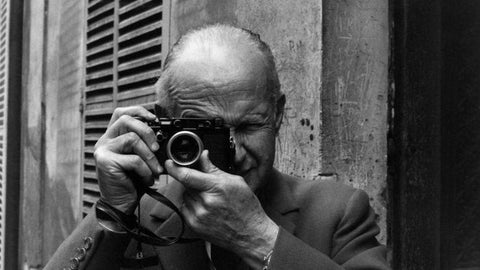
© Henri Cartier Bresson
Henri also sketched. He actually tried his hand at many creative activities. Creativity ran in the family – his grandfather was an artist and even his father painted occasionally.
He tried to learn music but it didn’t work out and he later attempted to learn oil painting under the guidance of his uncle who was an excellent painter. These lessons were cut short when his uncle was killed in World War I. Henri continued his painting lessons under Jacques Émile Blanche, a society portraitist. Henri was quite frustrated with the ‘rule laden’ style followed by Jacques Émile Blanche but this rigorous training would help him in the future as he identified and resolved artistic issues as well as the composition in his photography.
As a young man, his first experience with photography would come with a Box Brownie he used to take photographs of his holiday and during the same period, he experimented with a 3x4 inch view camera.
In 1929, while he was in the Army, he was put under house arrest when he was caught hunting without a license. It was then that he met Harry Crosby from America who managed to convince the commander to release him for a few days. They had a mutual interest in photography and Harry gave him his first camera. They spent time taking photographs of Crosby's home in Le Moulin du Soleil, Paris.
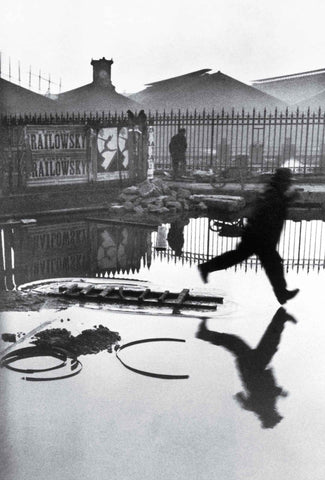
© Henri Cartier Bresson
Partly due to the Avant Garde scene in Paris and his fresh release from the army, Henri Cartier Bresson set off to Africa in 1931. He spent his days hunting and selling game to the locals.
What Africa did manage to do was kindle his interest in photography. He started experimenting with the Brownie that he was gifted by shooting the new world around him.
He returned to France and started exploring Surrealists after being inspired by the Three Boys at Lake Tanganyika photograph. This photograph was the nail in the coffin and he dropped painting to take up photography more seriously.
He acquired a Leica camera along with a 50mm lens – this is the kit that he would use for most of his career. He was especially enthralled with the anonymity that the small camera offered as he could overcome the unnatural behavior of those who knew they were being photographed. He enhanced this anonymity by painting shiny parts with black paint.
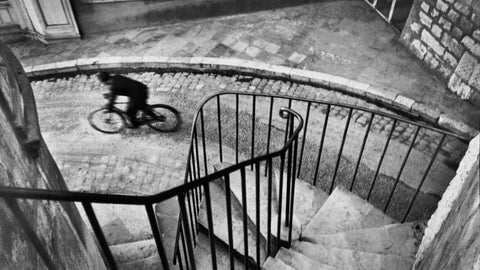
© Henri Cartier Bresson
Henri Cartier Bresson photographed locations across the world including Madrid, Budapest, Berlin, and Brussel. The first exhibition of his work was in New York, 1933 and later in Madrid. Two years later, he did an exhibition with Manuel Álvarez Bravo in Mexico. You may have noticed I didn’t mention France and that is because he didn’t photograph his native country until much later into his career.
Once he did return, he worked under Jean Renoir, a renowned French film director. He played minor roles in two movies - Partie de campagne in 1936 and La Règle du jeu in 1939. He also assisted Jean Renoir in making a propagandistic movie for the French Communist Party.
His life took an abrupt and quite dramatic turn in 1940 when the Germans invaded France. He joined the army but was captured by the enemy and was a prisoner of war for three years. He tried to escape twice and finally succeeded the third time in 1943. Without missing a beat, he returned to photography and filmmaking. He would go on to make a movie for the US on a documentary about returning French prisoners.
Fast forward a few years and he departed to India where he got the chance to meet Mahatma Gandhi and photograph him shortly before his assassination in 1948. His efforts to document the assassination and the resulting shockwaves in India became one of the most prized photo essays in that era.
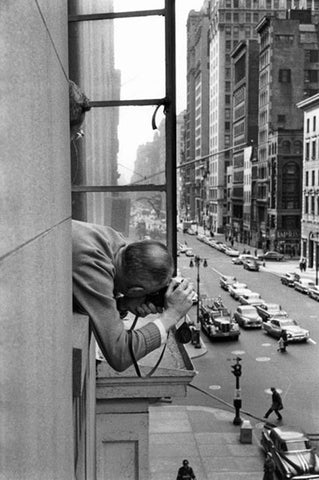
© Henri Cartier Bresson
He continued to work towards solidifying photojournalism as a true news form. To achieve this, he founded Magnum Photos with four others, a premier photo agency.
His Leica was always next to him during all of this. He witnessed the Chinese revolution, documented Khrushchev's Russia and photographed George VI's coronation although his photographs focused on the crowds and the streets. His subjected ranged from the beautiful Marilyn Monroe to Che Guevara while the magazines that employed him included Vogue, Harper’s Bazaar and Life to name a few.
In 1966, he quit from his position at Magnum and turned to his former interests; drawing and painting. He shied away from interviews and refused to discuss his photography career, content to be alone with his notebooks as he sketched endless landscapes and figures.
Technique
Henri Cartier-Bresson believed that the only editing a photograph needed was what you did in the viewfinder and not in the darkroom (or photoshop in today’s world!). All his photographs were printed at full frame and did not feature any manipulation, not even cropping!! He was insistent that a few millimeters of the undeveloped negative were left so his images had a black frame. Henri’s equipment list was always light: he carried his Leica with a 50mm lens and sometimes a 90mm lens.
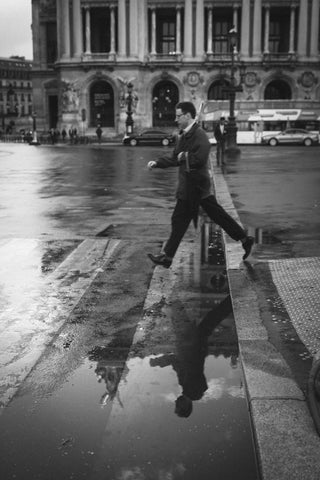
© Henri Cartier Bresson
Other than a few failed attempts at shooting color, he stuck to black and white alone. Quite curiously, he was hardly invested in developing his prints – he was uninterested in the process of photography and stuck to only the shooting part of things. The technical aspects mattered only when they allowed him to express his vision for the photograph.
He had a pretty quirky tradition where he would test new camera lenses by going out to the nearby park and photographing the ducks. Unfortunately for us, he never published these images but he called that quirk his only superstition so we can guess that he considered it a form of baptism for the lens!
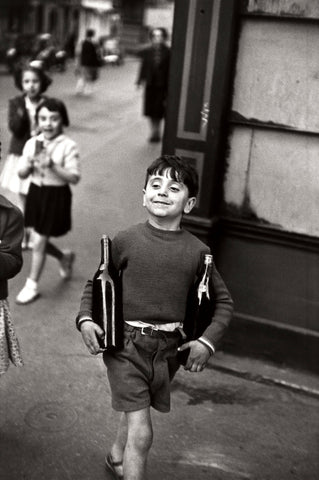
© Henri Cartier Bresson
He is well regarded in the art industry for his very unassuming personality. He was never one to seek the spotlight and was maddeningly shy ever since his days of hiding from the Germans during the World War. He was very good at shooting portraits of many well known figures but his own face was unknown to most of the world.
Just a few weeks prior to his ninety sixth birthday, Henri Cartier-Bresson away at Provence, a province in southeastern France. Natural causes were deemed the cause of death.

© Henri Cartier Bresson
~FREE delivery to Hong Kong~
More art prints on Kakahuette's online art gallery


